
In the final pages of Southern Adventure, the previous volume in his memoir The Story of a Life, Konstantin Paustovsky boards a train from Tiflis (Tbilisi), Georgia to return to Russia having been struck by “the realization that nobody needed me here.” Anyone who’s read the first three volumes will know that Paustovsky must have been haunted by the memory of the two people who did need him: his mother and his sister Galya.
Paustovsky’s mother and sister were the last remnants of his family, a family blown to pieces by war, revolution, and misfortune. Volume One of The Story of a Life opens, in fact, as the author, then a young schoolboy, travels through a Ukranian winter to his father’s burial. The last sight we (and Paustovsky) have of them is in Volume 3, In That Dawn, when he’s forced to abandon them in Kiev as control of the city is wrestled for by the Reds, the Whites, the Germans, and the Ukranians. At the time, Galya had already begun to lose her sight, leaving the two women in a desperate state, with few friends and almost no resources to support themselves aside from the few funds that Paustovsky can send them from time to time.
By the time Paustovsky is reunited with them at the beginning of The Restless Years, Galya is blind and they are reduced to living in a single room in a tenement in Kiev: “two spindly iron bedsteads, an old cupboard, a kitchen table, three wobbly chairs and a mirror on the wall.” Everything in the room is grey — as if covered in dust, but in reality simply worn out of color through years of constant wiping and polishing.
Yet their faith in Paustovsky is undiminished by their years of waiting and need. All that matters to them is that, as a writer, he can change the world. “Tell me please, about the things you write,” his mother asks: “Can they help people, so that they will suffer less?”
It’s hard for any writer to change the world, especially when writing in a time of tremendous political, economic, and social upheaval. But as The Restless Years demonstrates, in Paustovsky’s case, it was not for lack of trying. He arrives back in Moscow in August 1923, almost five years after his last departure. The city is in the midst of one of the early experiments of the Soviet regime, the first cycle of the New Economic Policy and the closest the Communists came to embracing capitalism. Moscow is full of “NEPmen.” These supposed entreneurs were, for the most part, schemers, grifters, and swindlers with little to contribute to actual economic improvement. To Paustovsky, they are like characters in a cheap imitation of a Chekhov play, living “in shabby and spasmodic grandeur, with ramshackle motor-cars, faded beauties and restaurant-gypsy music.”
The city is also overrun by thousands of children orphaned through almost a decade of devastation. These bespriorniki wear bits of old army uniforms, beg for handouts or rummage for scraps in gutters and wastebins, carry their meager belonging in their pockets — “bits of broken combs, knives, cigarettes, crusts of bread, matches, greasy cards, and bits of dirty bandages.” As poor as he and his fellow writers may be, often going a day or two without a meal, Paustovsky finds some comfort in knowing that the bespriorniki are even worse off.
1923 was no more than thirteen or fourteen years later than the schoolboy days that open The Story of a Life, but to Paustovsky it seemed as if he had already lived “so enormously long that the thought of it filled me with terror.” At 30, he feels himself an old man among many of his fellow writers, even though most were no more than five years younger.
That feeling only intensifies when he learns of Lenin’s death. “Men were waiting to be saved from thousands of years of helpless sufferings,” he reflected, and now, “The man who knew what had to be done was gone.” He goes to the train station to travel to Red Square for the funeral but arrives too late. He then tries to walk along the tracks into town but soon collapses out of hunger and exhaustion.
Lenin’s death took from Paustovsky and millions of Russians the spark that fired their spiritual commitment to the revolution. In its place came a grey blanket of bureaucracy and mechanical repression overseen by Stalin. Paustovsky found himself increasingly consumed in self-protection — and most of all, in protecting his intimacy with the Russian language:
I tried to put up a resistance against everything capable of soiling the inner world I carried within me and tried to communicate to others. Most of all I was afraid of becoming contaminated by that exhausted and impotent language which at that time was spreading relentlessly and swiftly.
“The Russian language exists like a collection of great poetry, as unexpectedly rich and pure as the blaze of a starry sky over a forest waste,” he writes. Had it been otherwise, “I should have taken up bookkeeping or something of that sort.”
It was a struggle in which he was, by his own admission, largely unsuccessful in the next few years. “There is nothing worse than a nail driven into the wall and bending,” Paustovsky tells us. “One has no confidence in it.” His poor attempts at fiction in the mid-1920s “resembled in some inexplicable way a mass of nails more or less bent.”
What breaks this impasse is an assignment to travel deep into central Asia. Paustovsky’s imagination had been inspired by reading of an attempt by a Frenchman, Bernardin St. Pierre, to interest the Empress Catherine in his founding a utopian republic on the shore of a vast and desolate inlet off the Caspian Sea known as Kara Bugaz (now Garabogazköl). Catherine had better sense than the Soviets, who launched a grand venture to establish a salt production industry in the regime.

If you want an unbiased version of the Kara Bugaz salt factories and Paustovsky’s role in propagandizing it, I highly recommend reading Frank Westerman’s excellent book Engineers of the Soul: The Grandiose Propaganda of Stalin’s Russia. For as much as Paustovsky earned a reputation as one of the few Soviet writers to maintain a relatively high level of personal integrity through decades of pressure to conform to the changing tides of editorial policies, his novel Kara Bugaz (1932) (translated as The Black Gulf) veers too close to socialist realism (i.e., propaganda) for comfort. Even in retrospect, his willful misreading of the reality of the situation is clear:
As I have already said, the work in Berezniki was carried out by deportees. But deportation is one thing and work another. Their condition as deportees in no way affected the selflessness of their work. They were the first, according to the chemical experts, to set up machines and installations which they had never seen before. In the past they had only dreamed about them or else read about them in foreign scientific and technical journals. Indeed, there was much to amaze the layman and strike him as being nothing less than a miracle.
The one good result from Paustovsky’s Kara Bugaz experience was that he quit the writers’ collective he’d joined after returning from Moscow and committed to making it on his own as an independent: not an easy task for any writer and particularly challenging through twenty years of Stalin’s rule.
But it also makes The Restless Years the most problematic book in The Story of a Life. It’s easy to read the first five books as the story of a series of violent storms as seen by a bit of flotsam caught up and tossed about by their winds and waves. Paustovsky was too close to the center of Soviet cultural life not to know the true nature of Stalin’s regime. And he cannot console himself, like his friend Mikahil Prishvin, by losing himself in the wonders of Russian nature and wildlife.
The fact that he kept himself aloof from much machinations of the Soviet system doesn’t mean that he remained pristine. Glimpses slip through now and again in The Restless Years. In describing an incident in which he collapsed from typhus while traveling on assignment in the Caucasus, he mentions in passing:
Famine had started in the Ukraine at the time and thousands of refugees rushed off to the south, to Transcaucasus, to the warm regions where there was enough to eat. They flooded out all the railway stations between Zugdidy and Samtredi. Typhus broke out among them.
There may have been a million or more corpses left in the wake of “Famine had started in the Ukraine.”

As with the two volumes before it, The Restless Years is full of wonderful sketches of the many writers Paustovsky encountered in the course of his long career. Perhaps the best are his recollections of Isaac Babel in volumes 4 (Years of Hope) and 5 (Southern Adventure). In one profile in this volume, however, he drops his artifice of blindness to Stalinist repression for a moment. He writes of Sergei Budantsev, who was loved as a conversationalist for his habit of sharing his thoughts for future books, “telling people willingly and in detail” their plan, subject, characters, and plots. “He would thus create a whole cycle of oral chapters and novels, worked out and completed to the last detail” — which then, all too often, he failed to translate onto the written page. Paustovsky ends his sketch with one chilling sentence: “Budantsev was one of the first to die in a Chukota concentration camp.”
The Russian edition of The Restless Years was published in 1964 — after the end of the Khruschev Thaw, but perhaps early enough in Brezhnev’s regime that such a blunt disclosure could still be tolerated. Nonetheless, when he wrote his memoir of Soviet literary politics, The Oak and the Calf, Alexander Solzhenitsyn was critical of what he saw as Paustovsky’s reluctance to call out Stalin’s repression directly, lumping him in with Ilya Ehrenburg, whose record of collaboration with the regime was certainly worse. The two men, he felt, were “writers who had seen the great dark epoch, and yet were forever trying to sidle round it, ignoring the things that mattered most, telling us nothing but trivialities, sealing out eyes with emollients till we no longer saw the truth.”
But Paustovsky may have had a different objective in writing his memoirs than of providing a historical record. He was an impressionist at heart, and if he can be criticized for not speaking out against the arrests, camps, exiles, and execution he knew were going on, he must also be credited for leaving behind one of the most vivid autobiographies ever written, a book of life every bit as much as War and Peace or Anna Karenina. And The Restless Years shows how Paustovsky came to understand how he needed to write.
Ironically, he claims that he came to this realization came to him on his journey to Kara Bugaz:
… I realized very soon that one must never make a special point of looking for material and behaving like an outside observer; instead, one must simply live while travelling or staying anywhere one happens to be, without trying to remember everything. Only then does one remain oneself and impressions are absorbed directly, freely, and without any previous “screening,” without the constant thought of what can and what cannot be utilized for a book, what is important and what is not.
“Memory,” he concludes, “will eventually make the necessary selection.” In saying this, Paustovsky is treating memory as inspiration rather than source. Throughout The Story of a Life, he recreates experiences, conversations, and sensations that no one could be expected to have remembered accurately or objectively. He doesn’t pretend to be authoritative on any point aside from his own memories, and even in recording those memories, he is saying, in effect, not “This is happened to me” but “This is what my life was like.” It may have made him a lesser witness in Solzhenitsyn’s eyes, but it certainly made The Story of a Life a book that seems at times as vivid and immediate as one’s own experiences.
Note: As I mentioned in my post on Volume 5, Southern Adventure, Vintage Classics has announced the release of a new translation of The Story of a Life by Guggenheim fellow Douglas Smith in June 2022. As wonderful as I’m sure it will be, this edition will not, include the last three books, so if you’d like to read the full story, you’ll still need to hunt down the Harvill Press translations of Volumes 4, 5, and 6. All six volumes can be found on the Internet Archive.














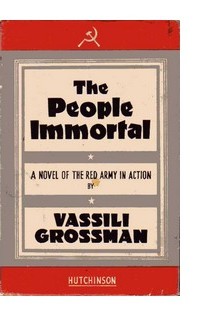

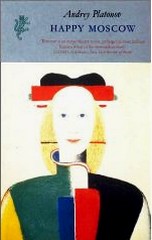 When I read the above opening passage of
When I read the above opening passage of 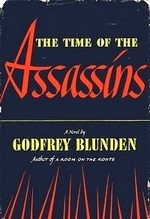 I first read Godfrey Blunden’s
I first read Godfrey Blunden’s 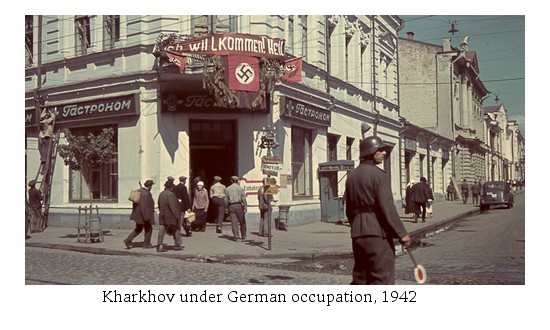
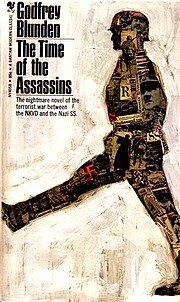 If history is a broom, sweeping back and forth through time, then
If history is a broom, sweeping back and forth through time, then 
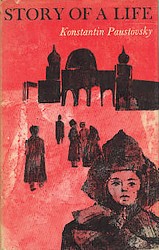 Paustovsky was a member of the Writer’s Union during years when it was probably impossible to work without cutting some bargain, committing some betrayal large or small, and ever so rarely we witness a tip of the hat to the prevailing dogma: “It was only in 1920 that I realized that there was no way other than the one chosen by my people. Then at once my heart felt easier.” Usually, these outbursts of Party faith are brief, awkward, and out of step with the rest of the story. The worst, a caricature of a
Paustovsky was a member of the Writer’s Union during years when it was probably impossible to work without cutting some bargain, committing some betrayal large or small, and ever so rarely we witness a tip of the hat to the prevailing dogma: “It was only in 1920 that I realized that there was no way other than the one chosen by my people. Then at once my heart felt easier.” Usually, these outbursts of Party faith are brief, awkward, and out of step with the rest of the story. The worst, a caricature of a 
